Rotor Components has shown off a brand new 1×13 drivetrain, which includes an enormous 10-52t cassette!
SRAM already has its 12-speed Eagle groupsets with XX1, X01, GX and NX, which are built around a 10-50t cassette. Just last month, Shimano just came to market with its brand spanking XTR groupset that offers a 1×12 option with a slightly bigger 10-51t cassette.
But it looks like Rotor has trumped both of them by making the jump straight to 13-speed, with the option of a humongous 10-52t cassette!
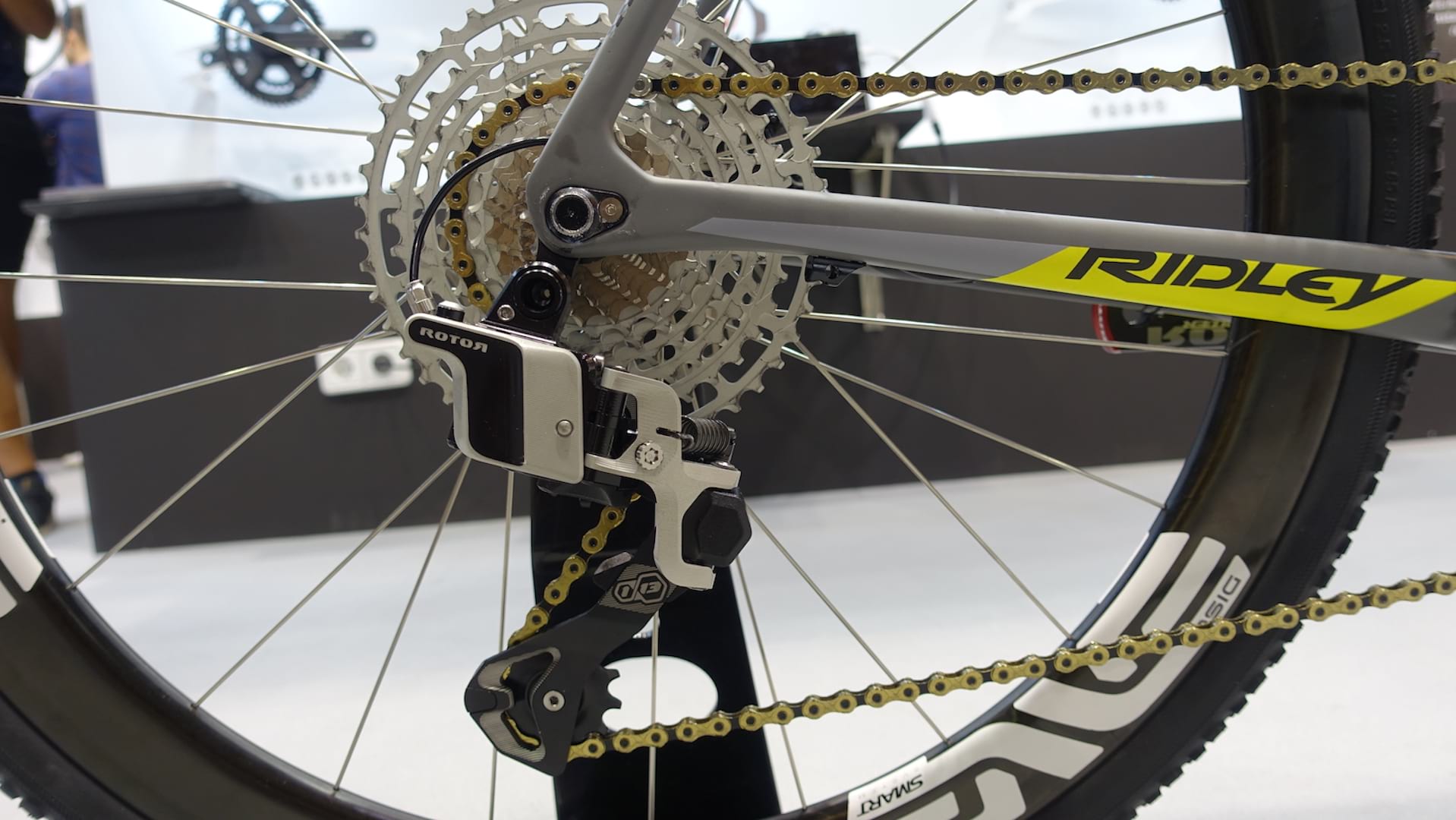
Rotor 1×13 MTB Groupset
Rotor already has a complete groupset, which is called UNO. Designed primarily for road riding, the UNO groupset features hydraulic shifting across its 2×11 drivetrain. In comparison, the new 13-speed drivetrain is 1x only, and its modular design means it will cover mountain biking, cyclocross, and road riding.
Eh? Why 13-speed?
Rotor simply says it can offer a wider gear range with better spacing between each gear change. And in the arms race with Shimano, SRAM, e*13, Box Components, SunRace and microSHIFT, bigger and more can offer you a tangible advantage over your competitors. For the roadies, Rotor also thinks it finally has a proper 1x option to help ween them off of front derailleurs.
That aside, 13-speed is also totally unique – Rotor is currently the only brand in the world to offer such a drivetrain. And given the number of journos scrambling to the Rotor booth at Eurobike, my guess is that they’ve already done a lot to raise market their own name.
One Drivetrain For All
The 1×13 drivetrain uses the one derailleur for all of the cassette options – you simply match the derailleur up to a road-style shifter, or a flat-bar trigger shifter. Then you pick your cassette ratio, as well as your crankset and chainring size. On top of that, there are 12-speed cassettes too, and the derailleur can be switched between 12 or 13-speed, depending on which cassette you’re using it with.
Rotor had prototype 1×13 components on display at Eurobike, though the engineers are still conducting testing both in the lab and on the trail. That means things could change from what we’ve been shown at Eurobike, and we also have bugger-all pricing information either. The plan is for the groupset to be commercially available in the first quarter of 2019, so hold tight for more info as we get it.
For now, let’s take a look at the components that make up this wild, Spinal Tap-esque 1×13 drivetrain!
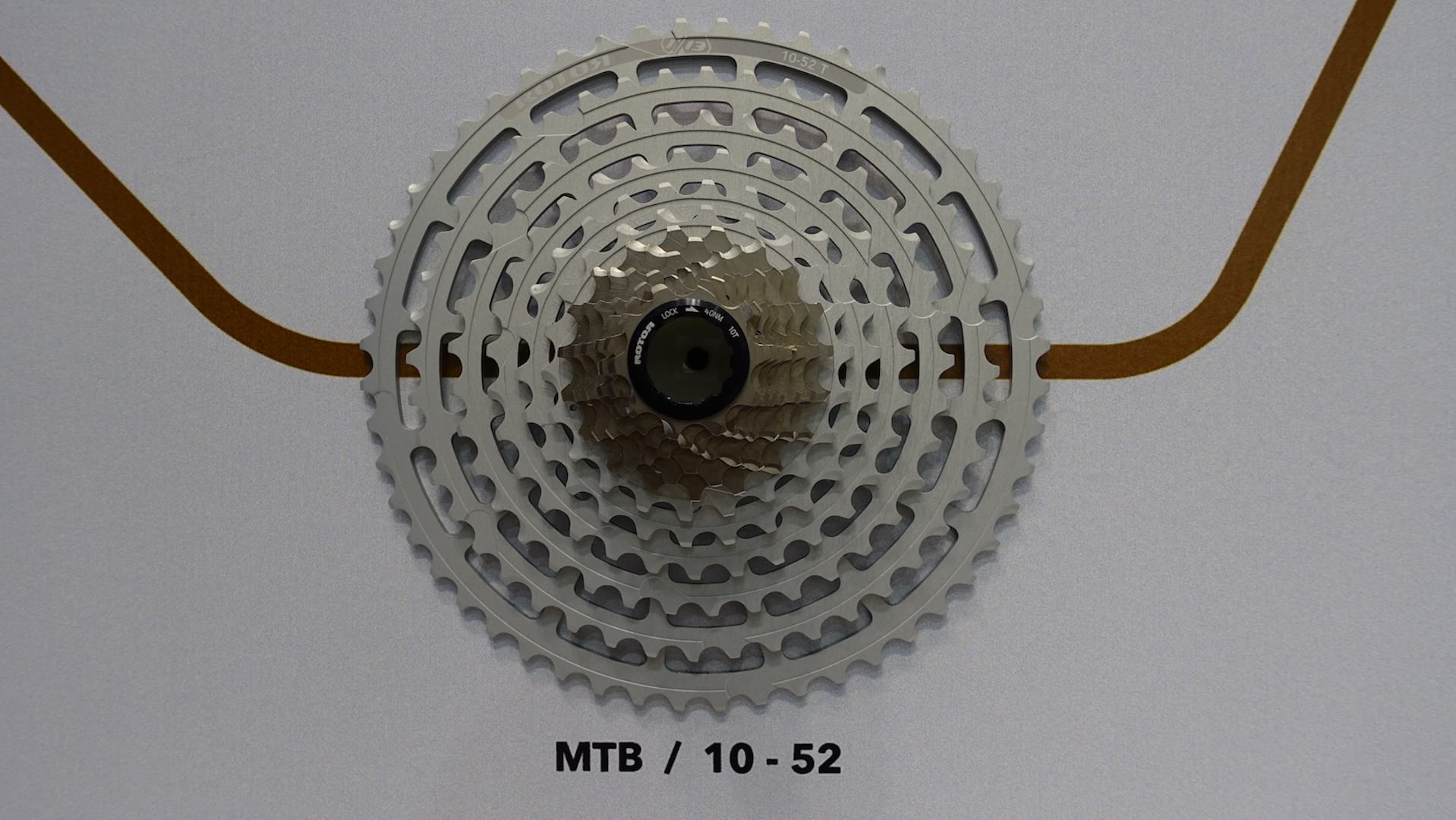
Rotor 13-Speed Cassette
Just like Rotor’s Uno cassette, the 1×13 cassettes will be made in two halves. The top 6 sprockets are CNC machined from a single block of alloy, with exquisite detailing on the backside as well as through the teeth. The 7 smallest sprockets are then made from a single piece of steel, producing a durable yet lightweight structure. There will be four options available with 13 speeds;
- 10-36t
- 10-39t
- 10-46t
- 10-52t
The 10-52t cassette is the one we’re particularly interested in, because not only is it the world’s first 13-speed cassette, it also provides a huge 520% gear range! Compared that to 510% on Shimano XTR, and 500% on SRAM Eagle. Rotor is also particularly keen to shout about its ratios, which are kept very tight at the smaller end of the cassette. According to Rotor and its athletes, this is preferable for sprinters, who want less change to cadence at the upper end of the block.
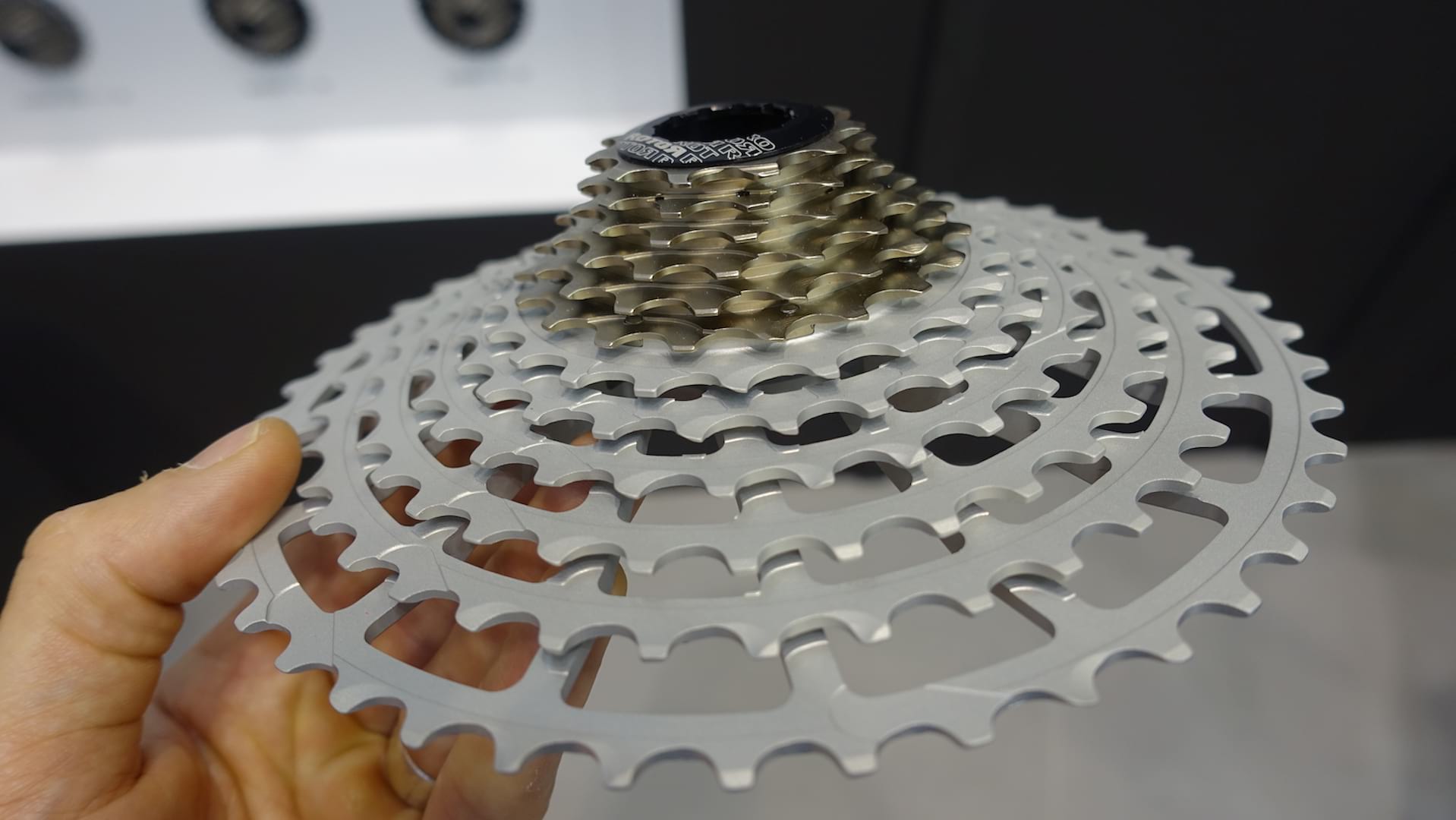
Tight Up Top, Big Down Low
The sprocket sizes for the 10-52t cassette are as follows: 10-11-12-13-15-17-19-22-26-31-37-44-52
And that translates to gear steps of; 1-1-1-2-2-2-3-4-5-6-7-8. So pretty spread out at the low end, but tighter at the higher end.
As for weight? Rotor is claiming just 335 grams for the 10-52t cassette, which if true, means it will be lighter than both SRAM Eagle XX1 and Shimano XTR equivalents. All the more impressive when you consider it has an extra sprocket.
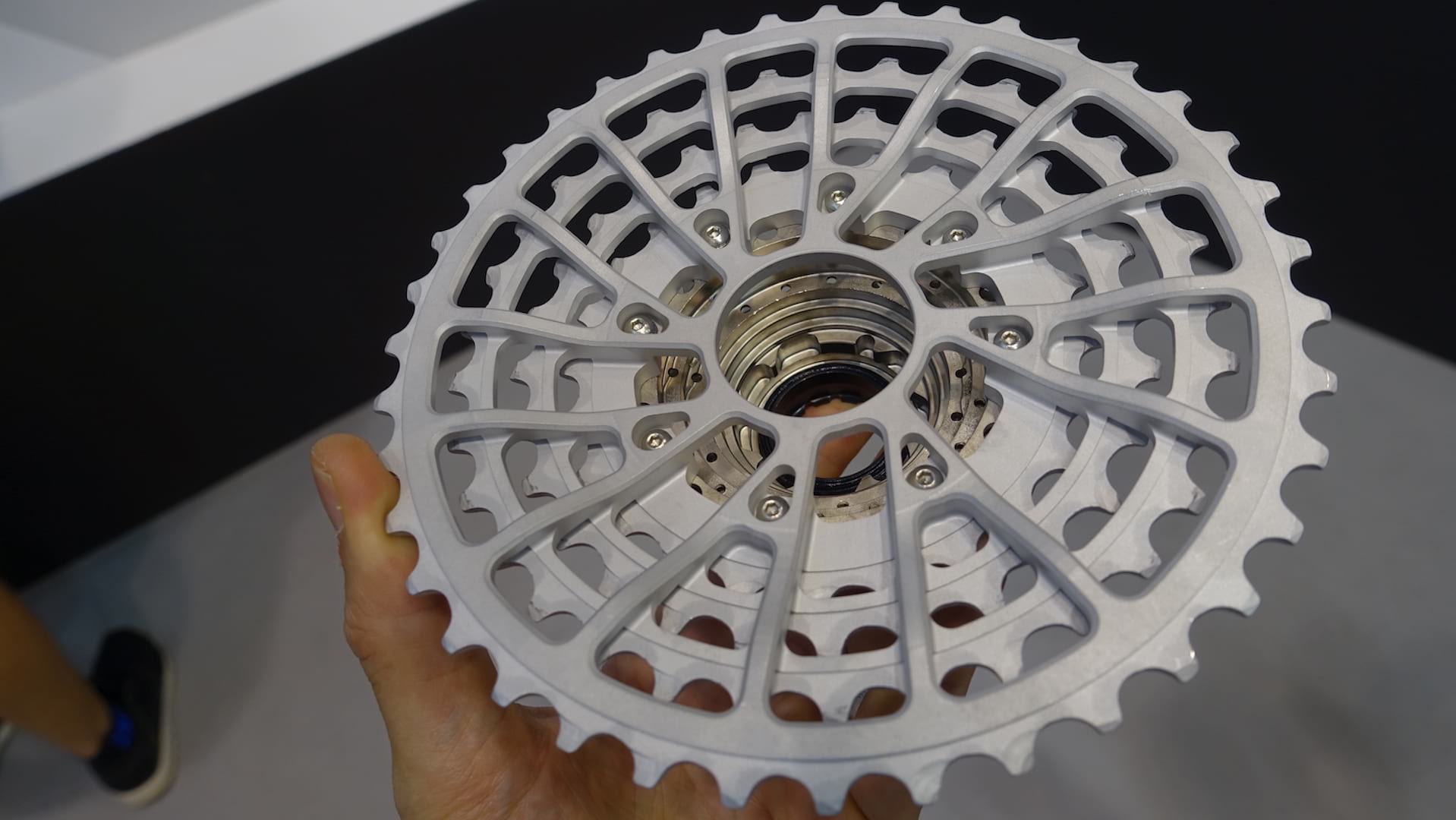
If you’re not so fussed on the huge gear range though, you could easily spec the 10-46t cassette, or the 10-39t, or even the 10-36t cassette on your mountain bike, with each featuring progressively smaller gaps between each gear change.
As with the UNO groupset, Rotor has worked with KMC for the chain here too, so it’s an off-the-shelf item from KMC. Interestingly, Rotor specs a 12-speed chain, and that means the chain width, cassette spacing, and chainring/cassette teeth width is the same as the existing 12-speed standard.
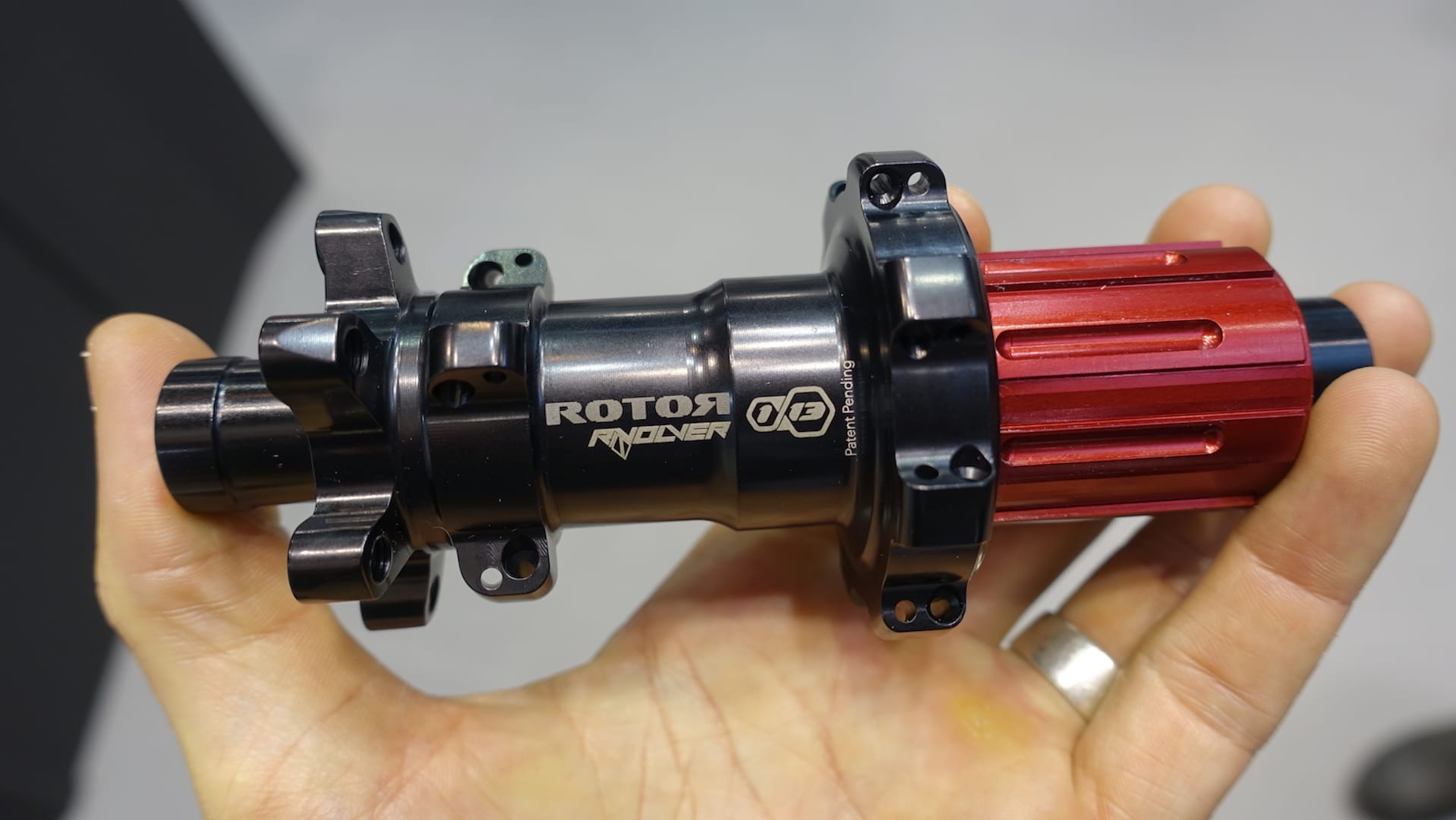
Rotor 13-Speed Freehub
To fit all 13 sprockets onto a rear hub, Rotor has developed a new freehub body standard. The design is quite simple though – the hub is the same width end to end (the same as existing 142x12mm or 148x12mm hubs), but the freehub body is a little bit wider to fit the 13th cog, while the rest of the hub shell is a little narrower. So in theory, you’ll end up with a less stiff rear wheel due to the narrower flange spacing. Otherwise the overall architecture of the freehub body is the same as Rotor’s existing hubs, so it very much looks like a regular Shimano HG freehub.
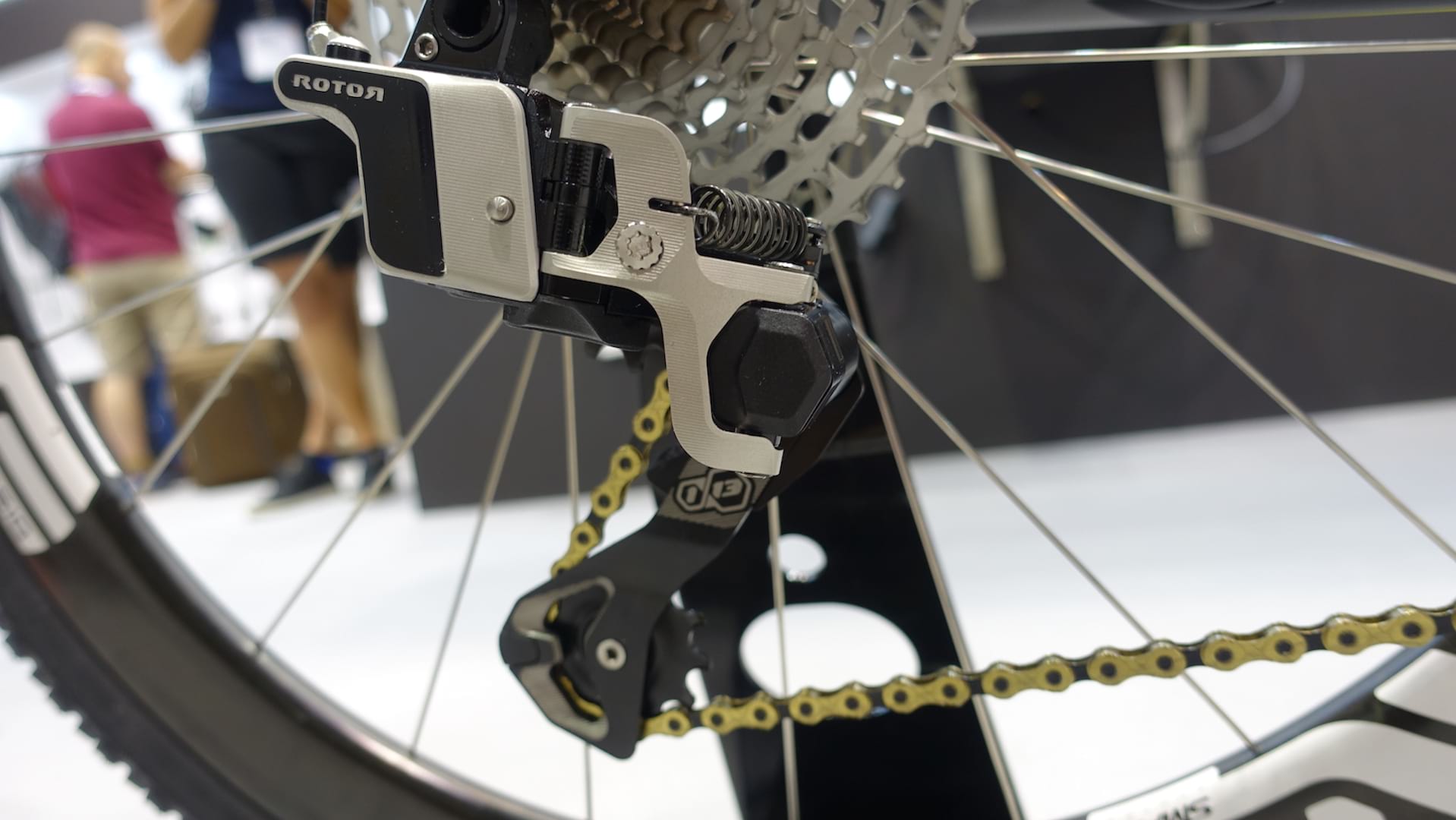
Rotor 13-Speed Derailleur
Aside from the 13 gears out back, the fact that Rotor is using hydraulic shifting is no less interesting. Hydraulic shifting has been used by Rotor already with the UNO groupset, and German brand Acros has also utilised oil as a shifting medium.
The new mech is nothing like the UNO derailleur though – it is much chunkier, with a longer cage that’ll accommodate up to a 52t sprocket. The machined construction gives it a cyborg look, with a very wide parallelogram providing stiffness to the whole structure. Inside the derailleur is the indexing mechanism (rather than being in the shifter), and there’s a bleed port that allows you to bleed the line just like you would with a disc brake. Rotor uses mineral oil for the 1×13 derailleur and shifter.
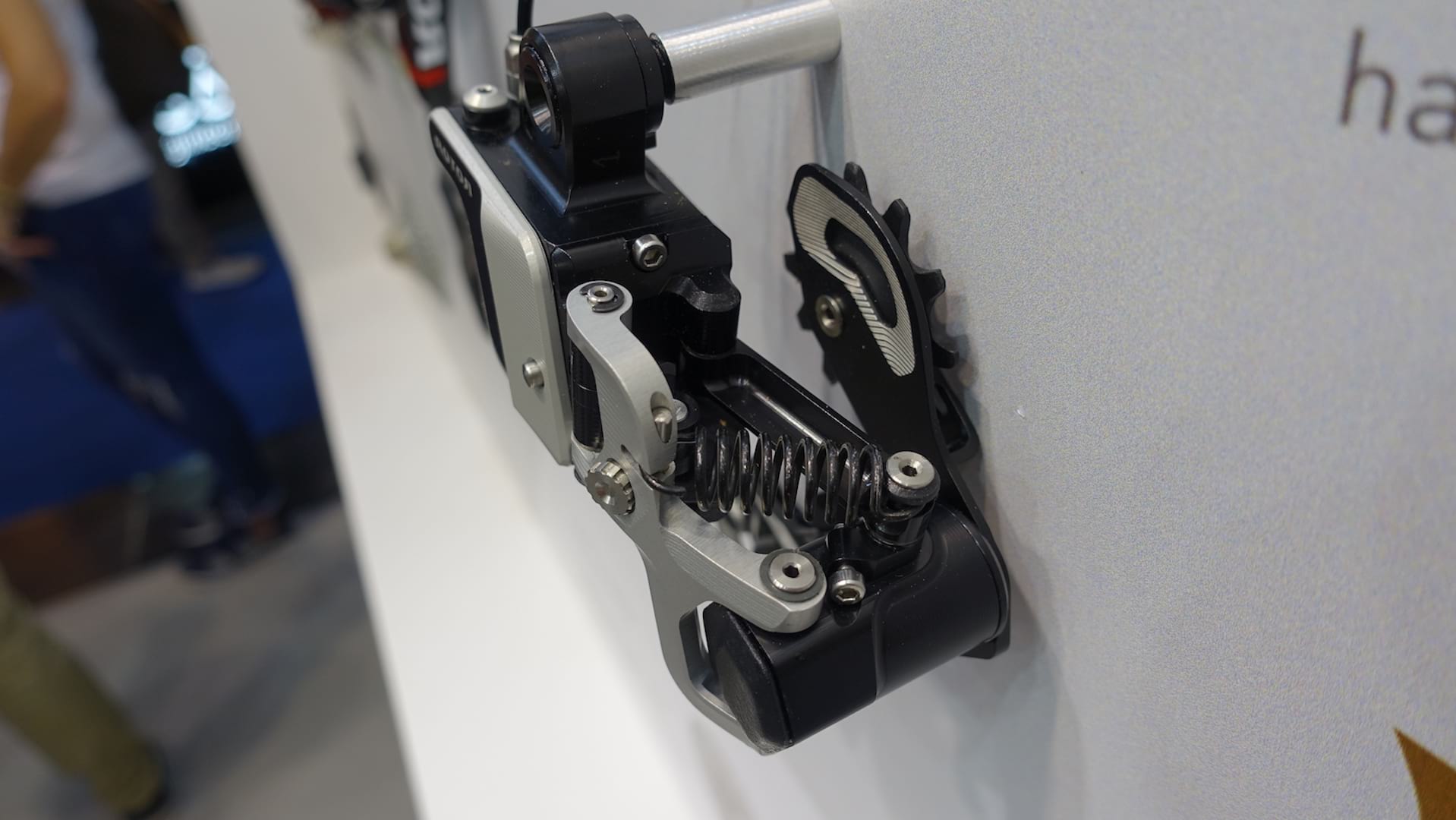
Other details include a one-way clutch mechanism for providing tension on the chain, as well as a Pulley-Cage Unlock button that allows you to free the derailleur of tension for removing the rear wheel.
According to Rotor, the hydraulic derailleur delivers a well-sealed and low-maintenance product, compared to a cable-activated system that’s at the mercy of dirt and water ingress. The thin 3mm hydraulic lines are also much less affected by tight internal cable routing.
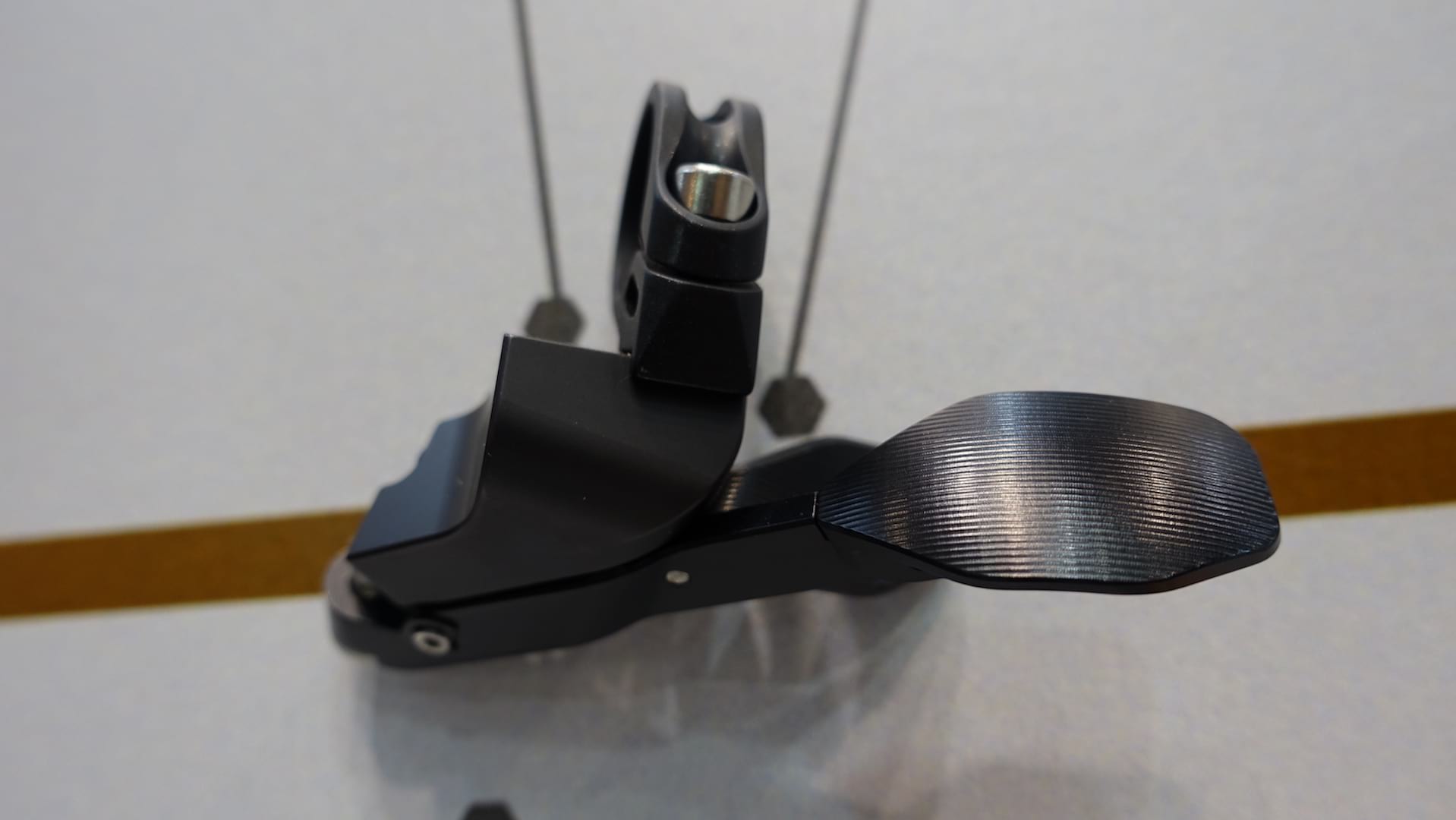
Rotor 13-Speed Shifter
Rotor had a drop-bar and a flat-bar shifter on display with the 1×13 groupset, and both will work with the same rear mech. The flat bar shifter uses two beautifully machined alloy paddles, though they do look like they’d have little trouble slicing through your knee cap in the event of a crash.

You can use both paddles to shift like you would with any other trigger shifter, but the most interesting aspect about it is that the smaller up-shift paddle can be removed entirely. With just the one paddle, you can perform both up and downshifts, just as you would with a SRAM double-tap road shifter. So push a small distance and release the paddle to drop into a harder gear, or push the lever further to drop into an easier gear.
As to how that will go on the trail, well it’s difficult to say. It’s certainly neat, and I understand it works well on the road, but I have my reservations as to how effectively the rider’s thumb will be able to tell the difference between up and downshifting.
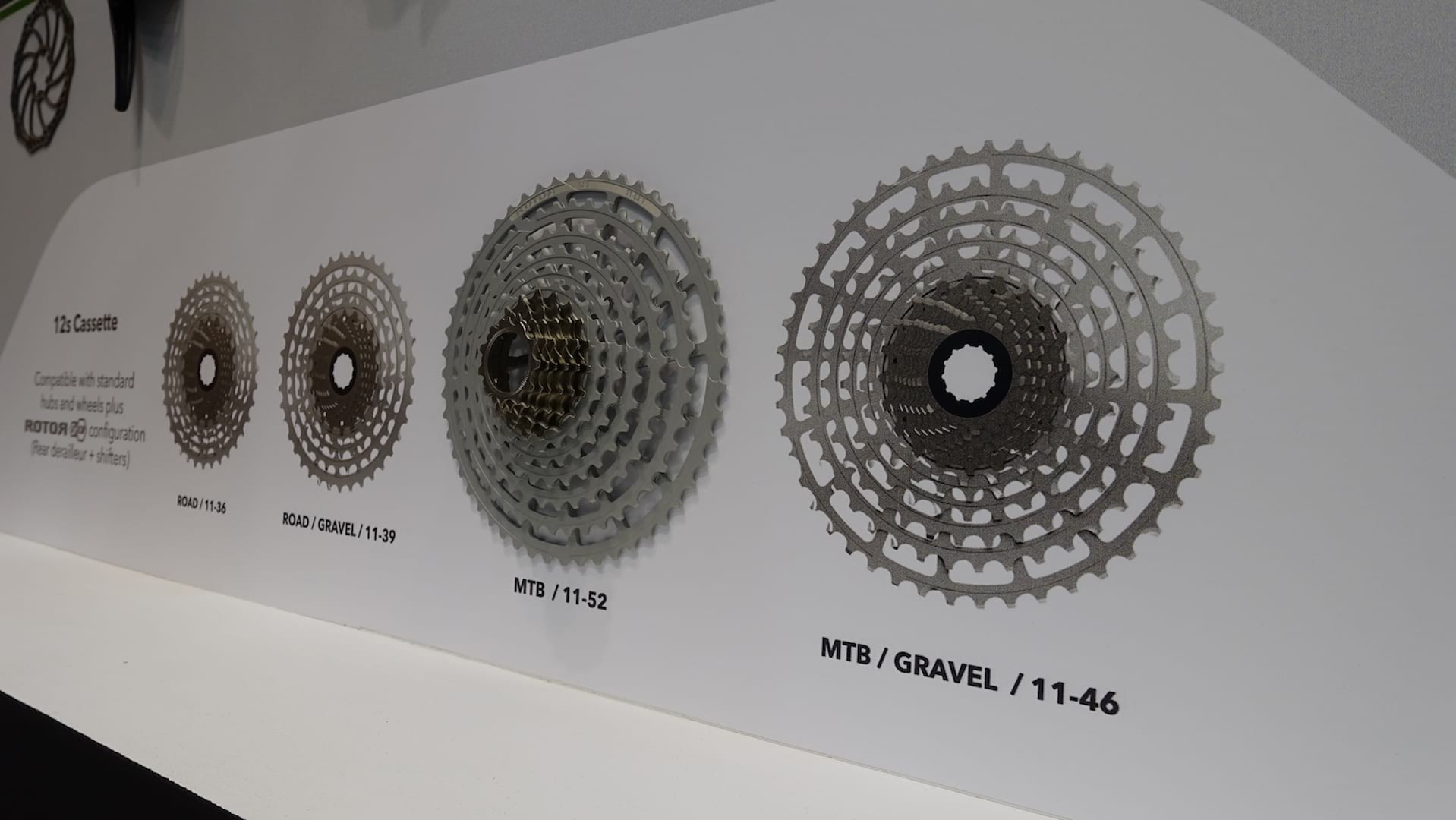
But Wait, There’s 12-Speed Too!
Yep, you don’t have to go 13-speed if you don’t want to – Rotor has developed four new 12-speed cassettes for use with the same 1x drivetrain. And to keep things simple and easy to understand, the 12-speed cassettes are essentially the same as the 13-speed versions, just with the small 10t cog removed. Because that cog is removed, and the whole cassette is narrower, they’ll fit onto a good ol’ Shimano HG freehub body. No special hubs required.
The 12-speed cassettes use the same spacing as SRAM, and from what we understand, Shimano XTR is also using the same spacing for its new 12-speed cassette. That offers up a load of possibilities – you could pair up Rotor’s new hydraulic shifter and derailleur with a SRAM Eagle cassette, or you could run a new Rotor 12-speed cassette with your Shimano XTR or SRAM Eagle 1×12 drivetrain.
Of course the 12-speed cassette doesn’t have the same range as the 13-speed version. But with a 472% range for the biggest 11-52t option, it’s still pretty damn enormous.
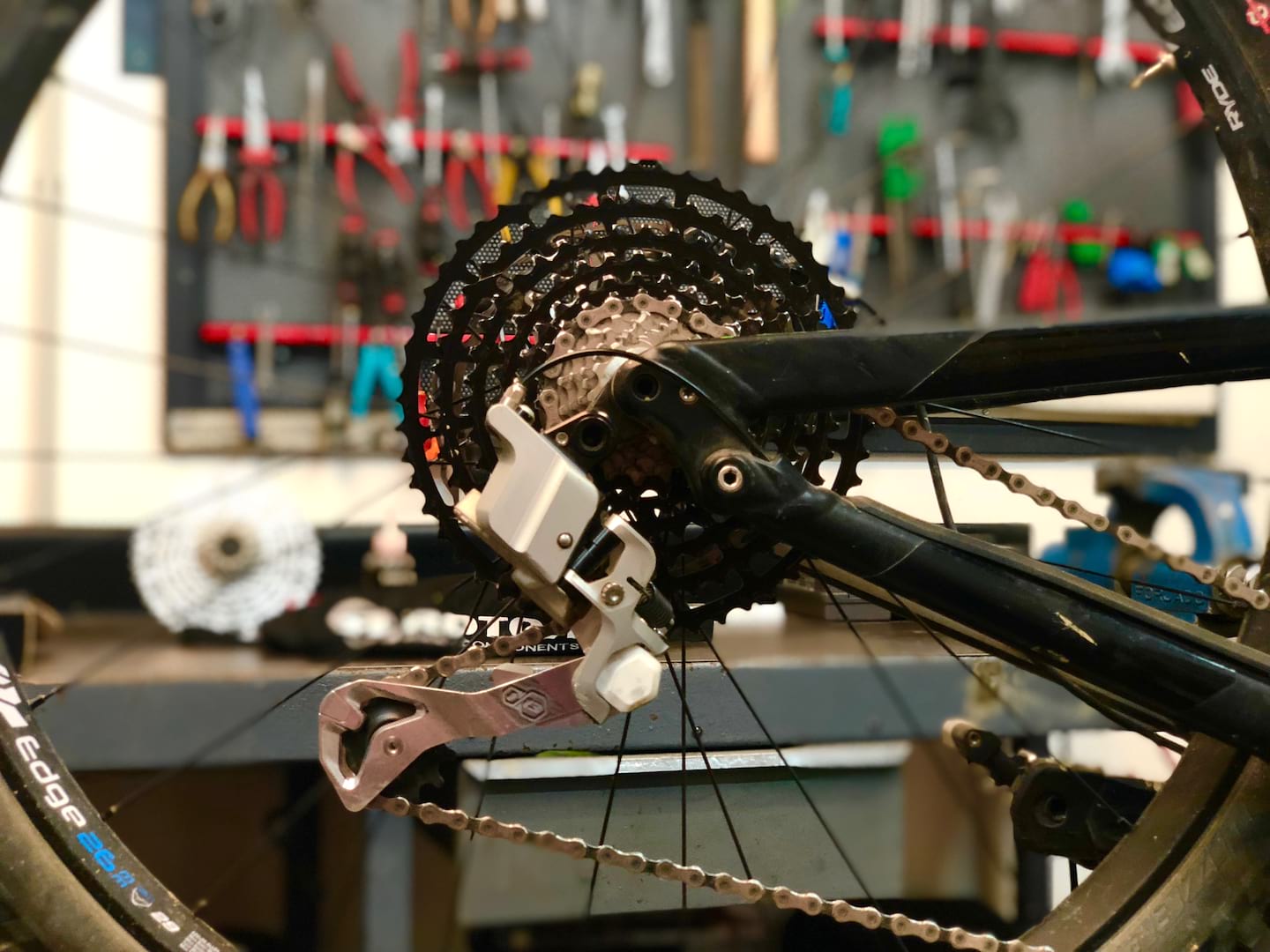
So, what do you guys think of Rotor’s new 1×13 drivetrain? Is 13-speed the future? An inevitability that SRAM and Shimano will be working towards too? Or is this one (gear) step too far?
While we wait to hear about availability of production drivetrains, you can head to Rotor’s website for more information on the new 1×13 groupset.






Hmmm, think I’ll wait for the price.
Then decide to stick with my (perfectly functional) 11-speed…
12 speed rocks so 13 sounds fantastic.